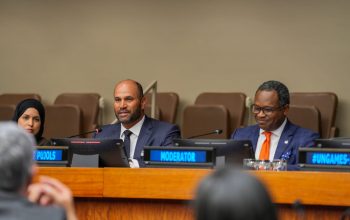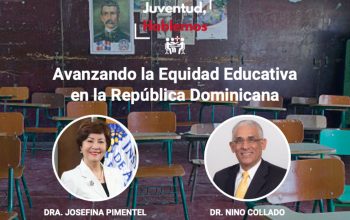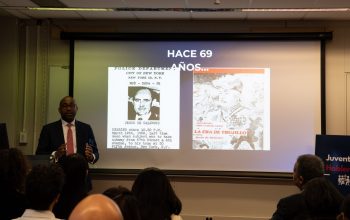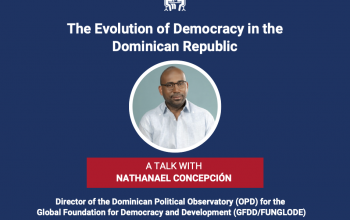news
“Politics in the Age of the Post-Truth”, an article by Dr. Leonel Fernández
March 12, 2018
According to the Oxford dictionary, post-truth is the expression that was most used in 2016. It experienced an increase of more than 2000% with respect to its use in 2015.
This increase was due, primarily, to two political events that began to take shape during those years: the Brexit in Great Britain that marked its exit from the European Union, and the US election campaign that led to the election of Donald Trump as president.
In both
cases, a communication technique that was novel until then began to be used. It attempted to appeal to voters’ emotions, rather than to their wisdom, in order to persuade them to adopt attitudes and behaviors that were in conflict with the reality, of which they were a part, in all its dimensions.
With the use of the post-truth as a communications technique, a mechanism was used for the first time in history, whose objective was to subordinate the truth to the
interests of the policy project that was being advanced.
It could be said that the implementation of this technique was nothing new. At the end of the day, it could be argued that the objective of the lies and propaganda was to misinform and manipulate, as a way to distort reality.
Yet, while it is similar to propaganda and lies, it is not entirely so, since the post-truth has a unique and characterizing feature. This singular element not only
represents a challenge to the possibility of knowing the truth, but rather seeks to ignore or deny its existence as such.
Although it has deep roots in the history of human thought, it had never been portrayed as a social phenomenon. Only in recent times has it begun to have scope and impact on new forms of communication in the field of politics.
Those who began to coin the post-truth expression had the good intention of highlighting the existence of
this new phenomenon, which they considered a serious threat to the effective functioning of democracy.
However, what is controversial or debatable with respect to the post-truth expression, is its own semantic meaning. The use of the post prefix may mean that it is something that comes after the truth. But, if there can be an after, it is assumed that there must be a before. Therefore, one could speak of a pre-truth; and a lie is opposite to the truth, then it could be
said that there is a pre-lie, a lie and a post-lie, all of which, obviously, would result in a serious nonsense.
Truth and Objectivity
The search for the truth has been a constant concern in the history of philosophy and science, which has its roots in ancient Greece. Plato had referred to this when he pointed out that Socrates had warned about the dangers of fake knowledge.
Aristotle was even more insightful.
In his work on metaphysics he described truth and lie in the following terms: "What is and is said to be, and what is not and is said not to be, is true.
But what is and is said that it is not, and what is not and is said to be, is a lie."
This is how the wise Greek philosopher defined, in a simple way, although it seems complicated, the notion of truth and lie.
However, there have been schools of thought that have
refused to acknowledge the possibility that the truth can be fully known. It is argued that there may be an approximation to the truth, a virtual truth, but never an absolute truth, as the supporters of post-modernism advocate nowadays.
The same criteria prevail regarding the concept of objectivity.
It is considered, especially in the field of communications, that the message that must be conveyed should be capable of reflecting reality, that is, that
it should not influenced by the values, principles and beliefs of the person who transmits it.
This notion of objectivity has been the ideal or the frame of reference to which professional journalism has always aspired. Starting in the mid-nineteenth century when the great mass printed media was being developed the rule was that information had to be conveyed in a spirit of impartiality or neutrality.
To make this possible, it has been stressed that
professional journalists must convey the facts of what happened, based on the data arising from the events; and, the elements that had to be taken into consideration for the news development were even itemized, as well as the specific technique of drafting the news, which was that of the inverted pyramid.
For years, these standards for searching and writing the news were the gospel of professional journalism. It was believed that objectivity, impartiality and neutrality
in the presentation of the information or news, had been achieved.
However, over time, it was understood that the presentation of the news events was not in itself as objective, since it required a series of procedures, which included the selection of the information; a presentation of the facts, not in chronological order, but rather in a descending order of importance; a contextualization; and, a decision on the page where it would be published within the
newspaper.
All this meant that, even hoping to be impartial and objective, the method used to prepare the information required a set of subjective values and criteria on the part of the person who prepared the news, which inevitably produced an informative bias.
The Danger of the Post-Truth
Thus, throughout history, there have been currents or schools of thought that have considered that truth and
objectivity cannot be fully achieved, due to pre-existing prejudices and a cognitive bias that prevent impartiality and neutrality from being achieved due to community life events.
For those sectors, reality as such does not exist. What exists is a social construction of reality, which, of course, is contaminated with the values, beliefs and ideologies of the person who builds it.
The difference between those who do not believe that absolute truth or
full objectivity exist and those who refer to the post-truth phenomenon, is that for the latter the question is not about whether the truth may or may not be known, but how to subvert it or modify it in order to use it to benefit a project of political domination.
While the lie deceives, propaganda manipulates and distorts; opinion journalism orients in a certain direction; and, advertising tries to convince consumers that their products are good. The post-truth, on the
other hand, alters reality, creates a new reality, a "non-real reality" that is non-existent and fictitious, with the aim of making certain values or criteria predominate, allowing the "real reality" to be subordinated to the emotions; and, as a consequence, dragging certain sectors of the population, in a thoughtless way, towards certain political actions.
As has been demonstrated during the Brexit and the last US
presidential election, the post-truth represents one of the greatest dangers facing modern democracy.
In the political age of the post-truth, people are led to believe in something that is not real, beginning with the presentation of what has been called "alternative data," generating new concepts and values that serve as a reference for the creation of perceptions, attitudes and behaviors.
In his classic 1984 novel,
British author George Orwell made reference to a world of twilight, of nightmare, of absolute political domination, in which the words, in a newspeak dictionary, expressed the exact opposite of what was intended to be said.
This way, love was tantamount to hate, as peace was to war; life was equivalent to death; and, truth was synonymous to lies. Orwell never thought that upon the arrival of the twenty-first century, advanced democratic systems would use techniques of
subversion of reality as dangerous as those which he, in his imaginary and fictional world, had predicted that they could only exist in totalitarian regimes.
Unfortunately, however, this is how it is. In the political age of the post-truth, everything is nothing; and nothing is everything. Truth does not matter at all.
Everything is possible. Having the will suffices.
Nothing has limits.
https://leonelfernandez.com/articulos/la-politica-en-la-era-de-la-post-verdad/






